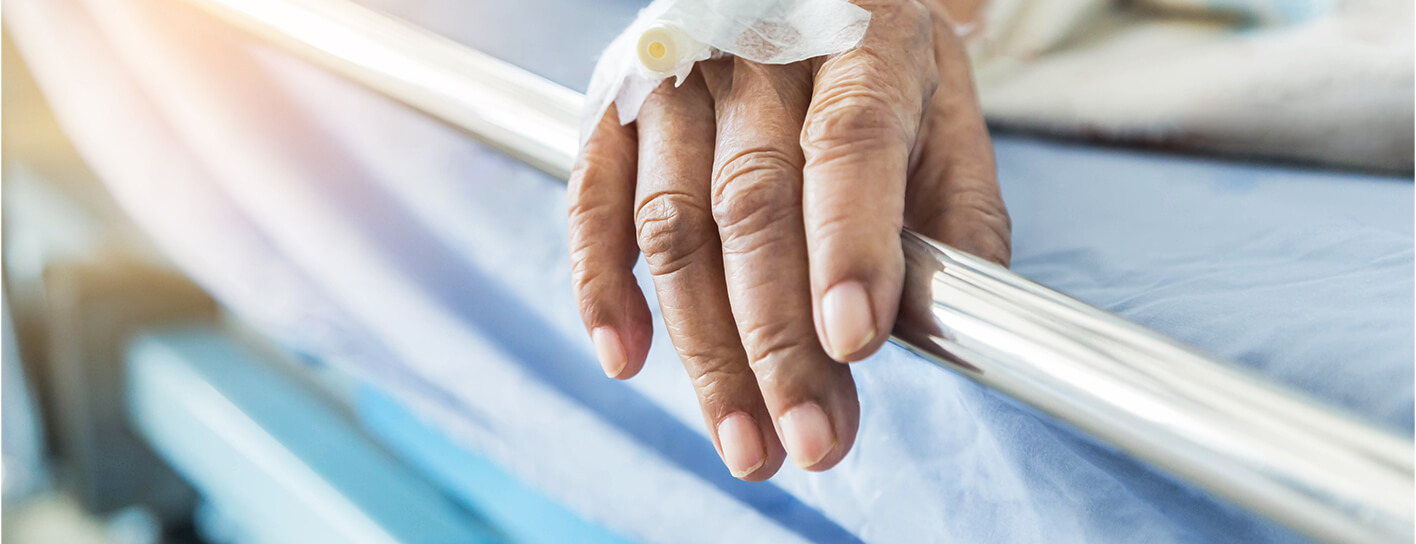
Safe use of bed rails
As part of each resident’s personal care plan, you’ll assess the risk of them falling from bed. Bed rails are an obvious and effective preventative measure. However, they come with their own set of risks and you should only use bed rails if they’re the most appropriate solution to preventing falls.
If you do decide bed rails are needed, bear in mind that they are not intended to limit freedom of movement, restrain the resident or be used as grab handles. And, the decision to use bed rails should involve the resident themselves where possible, or their family if not.
So, when are bed rails the most appropriate means to manage the risk? Consider things like whether the resident is likely to try to climb over the rails and cause more harm to themselves. If that’s likely, then other control measures (like extra low beds or sensor alarms) would be better.
You may need to work with families to help them understand that bed rails aren’t always appropriate. They might expect to see bed rails in place even if there isn’t a real risk of falling, not realising the potential risks of the bed rails themselves.
Risks and safe use
So, what are the risks? And what do you need to do to minimise them?
Entrapment
The biggest risk is the potential for entrapment. Injury, or even asphyxiation, could occur if residents become trapped between a bed rail and another part of the bed or mattress.
If gaps between the bed rail and the mattress are too large, your residents could be at risk. Some points to consider:
Entrapment underneath the bed rail
- The accessible gap between the bottom of the bed rail and the mattress platform should be no more than 60mm*.
- Make sure the bed rail and the bed are compatible – work with the bed suppliers to make sure you’re using the right rails, with the right beds and vice versa.
- Make sure the mattress is big enough for the bed. Movement will cause larger gaps to form.
- Avoid using airflow mattresses. They are more compressible at the edges.
- Avoid using other easily compressible or thin mattresses which could also allow access to gaps under the rail.
Entrapment between the end of the bed rail and the head & foot boards
- The gap between the bed rail and the headboard should be no more than 60mm.
- Any gaps between the bed rail and the footboard, or between two sections of split rails, should be 60mm or less, or more than 318mm*.
Entrapment between the bed rail and the side of the mattress
- Fit bed rails securely so they can’t wriggle and move away from the side of the bed.
- Use bed rails on both sides of the bed, even if there’s no risk of fall on one side. Fitting them on just one side could allow movement of the mattress, increasing the gap to a dangerous size.
- Where speciality mattresses are used on top of a standard mattress, make sure they’re properly fitting too.
- Consider bed rail bumpers or gap fillers to fill any risk posing gaps. But make sure they are robust and can’t be displaced. Work with the bed rail supplier to make sure this option’s safe.
Falls
In order to prevent falls, your bed rails should be a minimum height of 220mm, measured vertically from the top edge of an uncompressed mattress*. Remember, you’ll need to reassess the height of the bed rail if you:
- Replace the original mattress with a thicker one,
- Use an additional, speciality mattress on top of the original one, or
- Use an airflow mattress.
If the rail doesn’t meet the minimum height requirement of 220mm, you’ll need to carry out a risk assessment to further ensure safety.
Ask yourself:
- Are bed rails only provided where they are the safest and most appropriate solution for the resident?
- Are all staff trained to understand the risks of entrapment and falls?
- Are the details of the decision to use of bed rails noted in the resident’s care plan?
- Have the necessary checks been carried out to ensure the safety of the resident?
*According to British Standards BS EN 60601-2-52:2010
Get in touch
To see just how much we could start supporting you and your business today, get in touch with our experts on 0345 844 1111.
If you’re already a Citation client and have any questions around anything we’ve covered in this article, remember, we’re around 24/7 with our advice line.
Get more information
50,000
Happy Clients Each Year
24/7
Support For Your Business
300,000+
Questions Answered

